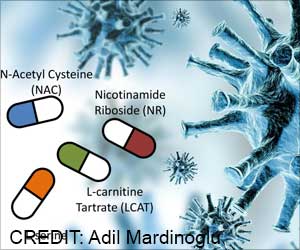In the midst of the opioid crisis, scientists are relentlessly pursuing safer alternatives for pain management. Opioids, while effective for short-term pain relief, have led to severe addiction and
issues. The year 2021 witnessed over 80,000 opioid-related deaths in the United States, with synthetic opioids like
).
In a recent breakthrough published in the journal Neuron by researchers at the University of Chicago, a potential solution to this crisis may be on the horizon. Although no new drugs have been developed yet, the scientists have identified a novel pathway in the brain that could revolutionize the way pain is managed, minimizing the risk of addiction associated with opioids.
Through extensive experiments on mice, the researchers pinpointed an alternative signaling pathway within the brain that effectively alleviates pain, even in animals with preexisting tolerance to potent drugs. This unique pathway offers pain relief without triggering withdrawal symptoms or stimulating the brain’s reward system, which opioids notoriously flood with excess dopamine, reinforcing addiction.
Daniel McGehee, Ph.D., professor of anesthesia and critical care at the University of Chicago and senior author of the study, emphasized the urgency of tackling the opioid crisis: “Deaths due to opioid overdose, particularly synthetic opioid drugs such as fentanyl have been rising dramatically for nearly ten years.” While various measures like changes in opioid prescribing, naloxone availability, and public education have made strides in curbing this crisis, the death toll continues to rise.
Uncovering the Role of Acetylcholine in Pain Relief
The newfound pathway, known as the ventrolateral periaqueductal gray, plays a pivotal role in regulating pain. While previous research acknowledged that certain drugs could stimulate this region to provide pain relief, non-opioid circuits influencing this area remained relatively unexplored.
Advertisement
The key to this groundbreaking discovery lies in the neurotransmitter acetylcholine, which plays a crucial role in these circuits. Targeting this neurotransmitter can alter pain responses, as the researchers found. Injecting a drug that targeted acetylcholine receptors in mice resulted in hours of pain reliefan unexpected and significant outcome.
The researchers also demonstrated that repeated stimulation of the pathway and exposure to drugs targeting acetylcholine receptors did not lead to tolerance to the pain-relieving effects, as often happens with opioids. This exciting revelation suggests that this method for pain relief may sidestep many of the side effects linked to opioid-based analgesic drugs.
Safer Future for Pain Management
While no painkiller discovered thus far matches the effectiveness of opioids in pain relief, this research presents a promising avenue for future development. As Dr. McGehee puts it, “We are exploring the mechanisms underlying the change in acetylcholine release in this brain area during painful experiences. We want to find other ways to recruit or activate this system for relieving painand that will keep us busy for the next few years.” In the midst of the opioid crisis, this discovery offers a ray of hope for a safer future in pain management.
Press more on Pain Relief without addiction, break free from opioid Chains and embrace natural healing.
Reference :
- Selective activation of Gαob by an adenosine A1 receptor agonist elicits analgesia without cardiorespiratory depression – (https:www.nature.com/articles/s41467-022-31652-2)
Source: Medindia



